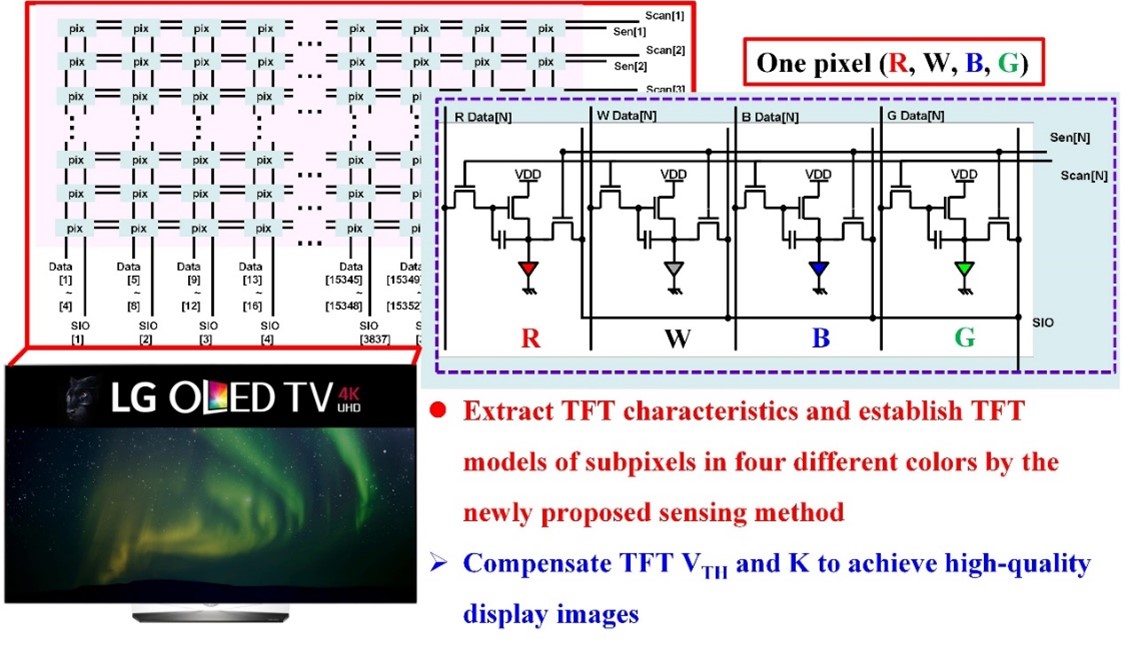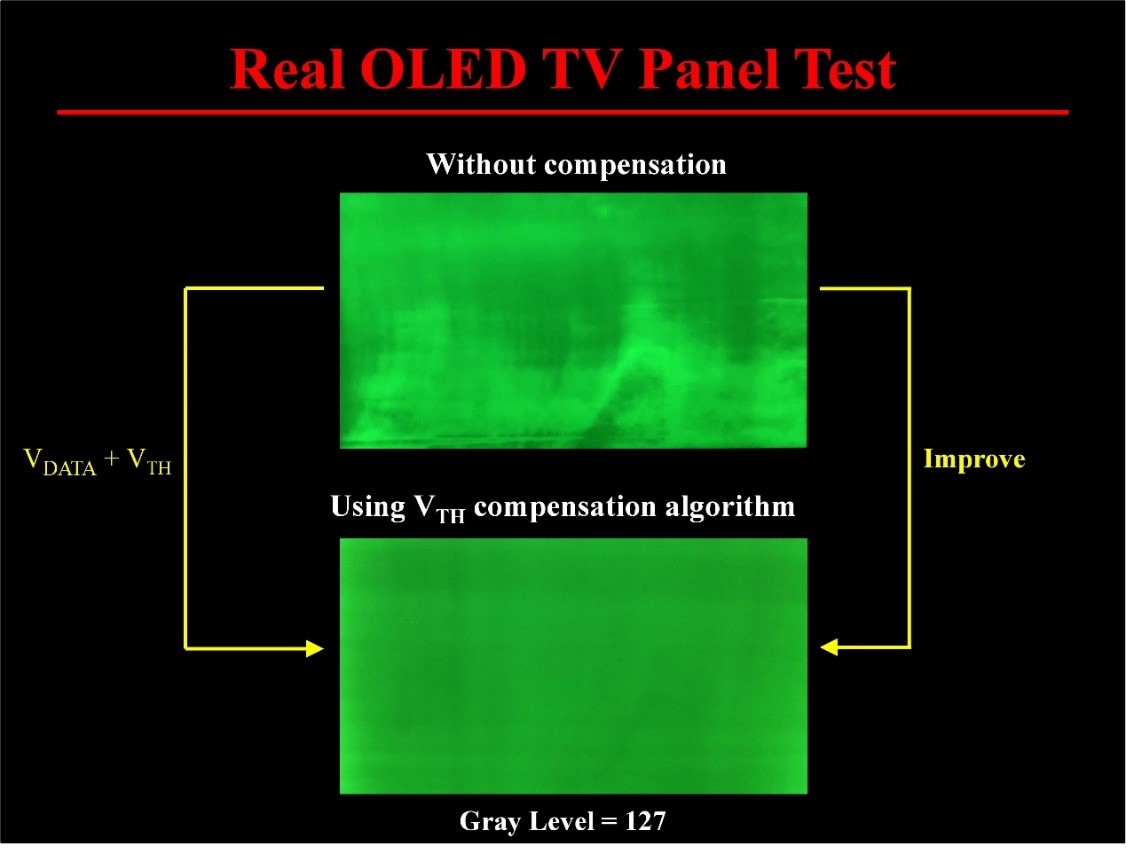| I. Research Purpose Thin-film transistors in pixel circuits for AMOLED displays are affected by the inconsistency of the TFT fabrication process, resulting in variations in electrical characteristics, including threshold voltage (VTH) and mobility variations. Also, the luminous efficiency of OLED will gradually decay, and its turn-on voltage will increase under long-term use, so the traditional 2T1C pixel circuit cannot achieve the same luminance when the same data voltage is input, leading to poor image quality. Many methods for compensating the TFT threshold voltage have been proposed in recent years. However, most of the compensation methods require a more complex pixel structure to compensate for the threshold voltage variation of TFTs, leading to a decrease in the yield of the panel. By using a concise 3T1C pixel circuit, we develop the external compensation algorithms for TFTs that is suitable for different color subpixels at various gray levels. TFT models are established, and the corresponding external compensation algorithms are developed by integrated circuits (ICs) and systems outside the panel, which measure TFTs on the fabricated OLED panel. Therefore, the non-uniformity of images caused by the variation in the threshold voltage and mobility of the TFT can be solved, and AMOLED displays with high quality can be achieved. |
| II. Research Results 1. Measurement and modeling of TFT threshold voltage and mobility: The sensing structure, as shown in Fig. 1, and the timing of the OLED panel for TFT threshold voltage and mobility are analyzed and designed. Also, the variations in threshold voltages and mobility of driving TFTs in pixel circuits are measured. According to statistics and analysis of the measured results of massive pixel driving TFTs at various gray levels, the regularity of the variations in TFT threshold voltage and mobility is found, and TFT electrical variation models under different colors and gray levels are established. |
||
Fig.1 Schematic of driving structure using 3T1C external compensating pixel circuit. |
||
|
2. Development of the compensation algorithm for TFT threshold voltage and mobility:
During the development process, we detected the driving TFT in the pixel circuit and obtained a large amount of TFT characteristic measurement data through the actual OLED panel. The TFT threshold voltage and mobility compensation values are extracted, respectively, enabling the establishment of the TFT electrical variation model and the development of external compensation algorithms. The proposed compensation algorithm was verified by simulations, as shown in Fig. 2, and was implemented in the real OLED panel to confirm the algorithm can effectively improve the image quality. Based on the visual effect and analytical results of multiple lit-up experiments, the compensation effect for OLED TV is highly improved. The TFT threshold voltage and mobility compensation value will have different trends at various gray levels and different color subpixels. We establish several fitting curves by calculating the slope of measurement data of each subpixel, which is used as the prediction curve for TFT threshold voltage and mobility compensation value at each gray level. To consider the compensation value variation of each pixel over the OLED panel, the grouping method is adopted for TFT compensation prediction model curves for all pixels in different locations of the panel. After the compensation prediction model is established, the parameters for different sub-pixels, colors, and gray levels of the model are stored in the non-volatile memory. |
|||
(a) |
(b) |
||
Fig.2 Simulated results of TFT threshold voltage compensation (a) before compensation, (b) after compensation. |
|||
|---|---|---|---|
|
3. Experimental results of TFT external compensation algorithm:
With this model and algorithm, we can obtain the TFT compensation value required for each subpixel at different gray levels. The sensing procedure only needs to be executed to extract TFT electrical characteristics when the OLED TV system is turned on or off. The OLED TV panel performs threshold voltage and mobility compensation for TFTs in display mode based on the parameters stored in memories. The required compensation value under different usage times can be updated to compensate for the uniformity of screen brightness. To verify the compensation effect of this algorithm, we evaluate the performance by lighting up the OLED panel, as shown in Fig. 3, demonstrating that the proposed algorithm can accurately compensate for the threshold voltage variation of TFTs and improve the uniformity of images. |
||
Fig.3 Pictures of lighting up OLED TV. |
||

補償前.jpg)
補償後.jpg)
